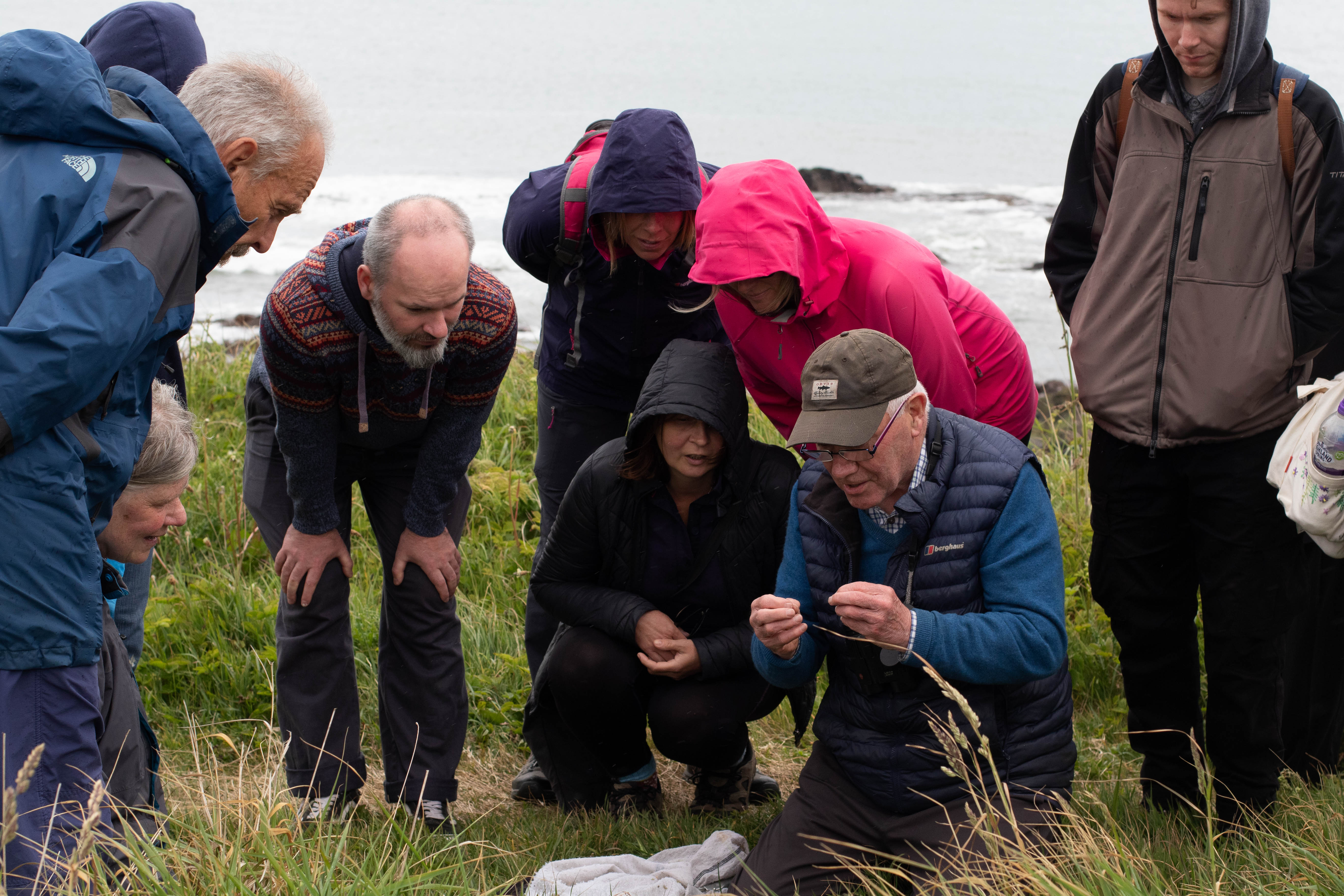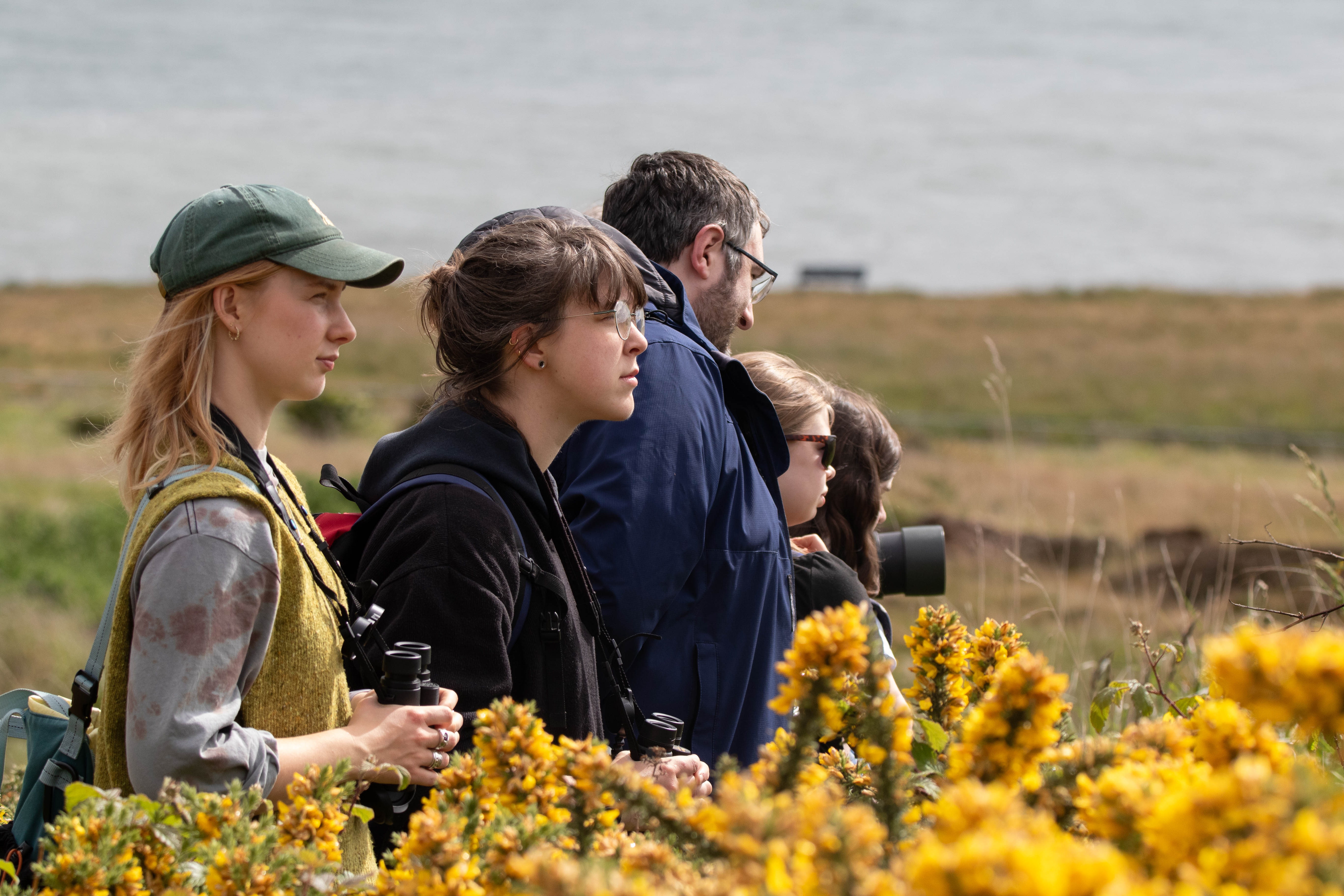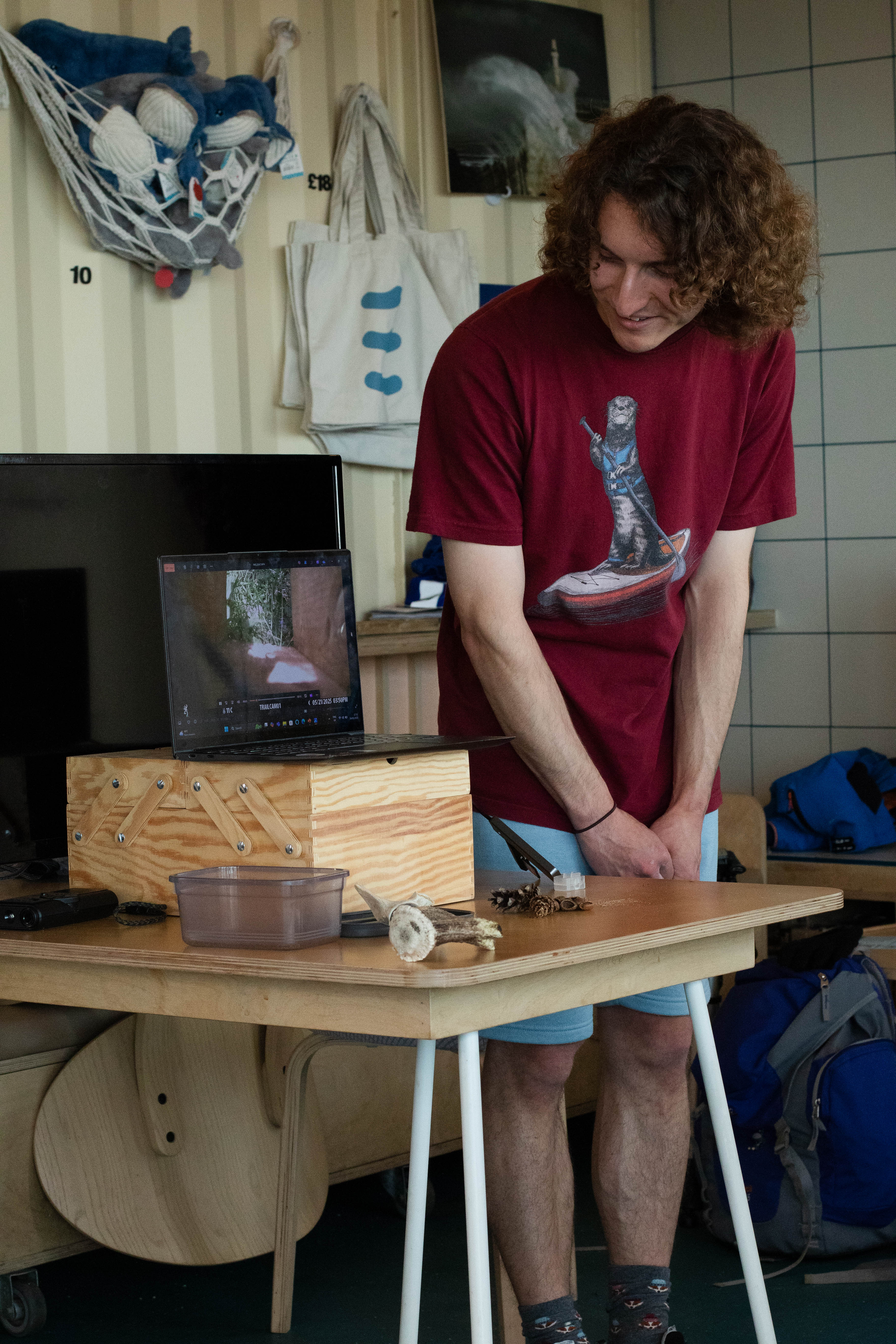Greyhope Bay's First Bioblitz



At the end of May this year, we hosted Greyhope Bay’s very first Bioblitz! From the rockpools and the plants beneath our feet to the birds in the sky and beyond, over 120 participants joined our volunteers and knowledgeable experts to find out what biodiversity we have in and around Torry Battery.
Well, we were lucky to have collected 268 individual records of plants and animals over the day. The records were collected from our guided walks with experts as well as individual surveys from visitors.
The Bioblitz actually opened the night prior to the big day, with a nocturnal survey of moths and birds led by Countryside Ranger Jack Elphinstone and RSPB Aberdeen chairman David Leslie. The wind was blustering, unfortunately, so all of the flying critters had hunkered down for the night rather than showing themselves for our light and red wine (yep, red wine) traps. Still, we got a run-through of Adam Robertson’s camera trap setup (this will be relevant later…) and had a go at using nets to sweep through the grass for arthropods! We found a few micromoths (and learned there are over 2,500 moth species in the UK), some very cool spiders, and all sorts of other little bugs - all while huddled together on the battery hill, chatting and geeking out.
.jpg)
.jpg)
First thing in the morning of the big day (24 May), birder Andrew Whitehouse took us on a bird walk where we saw 56 birds, with 38 unique species! The highlight? Hearing the rare Marsh Warbler (which only has ~20 breeding pairs around the UK each year)! It mimics other birdsongs in rapid succession, which made it both exciting and slightly confusing. For you gull lovers out there (hi, Rosie), we also saw the rare Glaucous and Iceland gulls. People loved using the binoculars that you can borrow from Greyhope Bay Centre.

.jpg)
Next, we were joined by John and Kate Malster - plant experts - on a wildflower walk that turned out to be about much more than just wildflowers. During this walk, we collected 64 records, including 56 plants, as we wandered from the center down to the bottom carparks and back. John and Kate might be two of the calmest, kindest people I’ve ever met, and their plant knowledge made me deeply jealous (and inspired)! Who knew there were so many yellow flowers that look like dandelions… but aren’t dandelions?!
After we returned, Brian Stewart arrived, joined again by John and Kate, to take us on a moth, butterfly, and insect discovery walk! Because bugs and plants are so intertwined, Brian thought it made sense to keep the plant experts around! And it paid off - we recorded 16 new finds along the coastal path, including 13 arthropods and 3 new plants. The kids on this walk had an absolute blast, and the adults quickly realised they had far better eyes than us. One personal highlight was being armed with a net and sent sprinting up the coastal bank after a white butterfly!
Remember, you can always borrow Coastal Flower Guides from the Greyhope Bay centre if you want to go on wildflower walks yourself.
.jpg)
At that point, the sky opened up with a downpour in true Aberdeen fashion. It waterlogged our little gazebo’s roof as most of us huddled underneath. However, some brave souls donned their rain jackets and dryrobes to head down to the rock pools for coastal discovery with Julia Black - our weatherproof volunteer. Down at the pools, they collected 16 records, including 9 seaweeds, 4 mollusks (like my favourite, the periwinkle), 2 crustaceans (can you guess what they are?), and one cnidarian - our lovely beadlet anemone.
.jpg)
The day ended with our Mammal monitoring workshop where Adam Robertson, a mammal master and also a barista at our very own cafe, showed off his camera trap findings (told you this would be relevant later!), where we excitedly saw a bluethroat hopping in front of the camera! Adam’s enthusiasm had everyone in the center laughing and engaged.

And it wasn’t just the guided walks that brought in the data. An incredible 116 records came from independent surveys by visitors who tried their hand at biodiversity recording. Shoutout to Ieuan Reynolds, whose commitment to moss identification deserves an award (11 unique moss species)!
Overall, we recorded 186 individual species around the site. That's huge, especially considering that until now, there was no biodiversity data here except for dolphin sightings. As part of our Greenpowered Assembly, when we asked the community what they wanted for the Phase 2 expansion of Greyhope Bay, the answer was clear: the site should benefit local nature and biodiversity. But that raised a key question. How can we protect what we don’t even know is here? That is the idea that sparked the Bioblitz... and we can certainly say it was a resounding success!
There’s still so much more to do to fully log the amazing biodiversity of Greyhope Bay, but May’s Bioblitz was an inspiring start.
To hear more about our findings and chat about what comes next, join us at the Greyhope Morning on Tuesday, 19th August from 10am-noon, where we’ll be joined by Friends of St. Fittick’s Park, who also recently completed their first Bioblitz. We’ll dive deeper into what we learned and talk about what’s coming next for all of our future Bioblitzes.

The rich text element allows you to create and format headings, paragraphs, blockquotes, images, and video all in one place instead of having to add and format them individually. Just double-click and easily create content.
A rich text element can be used with static or dynamic content. For static content, just drop it into any page and begin editing. For dynamic content, add a rich text field to any collection and then connect a rich text element to that field in the settings panel. Voila!
Headings, paragraphs, blockquotes, figures, images, and figure captions can all be styled after a class is added to the rich text element using the "When inside of" nested selector system.